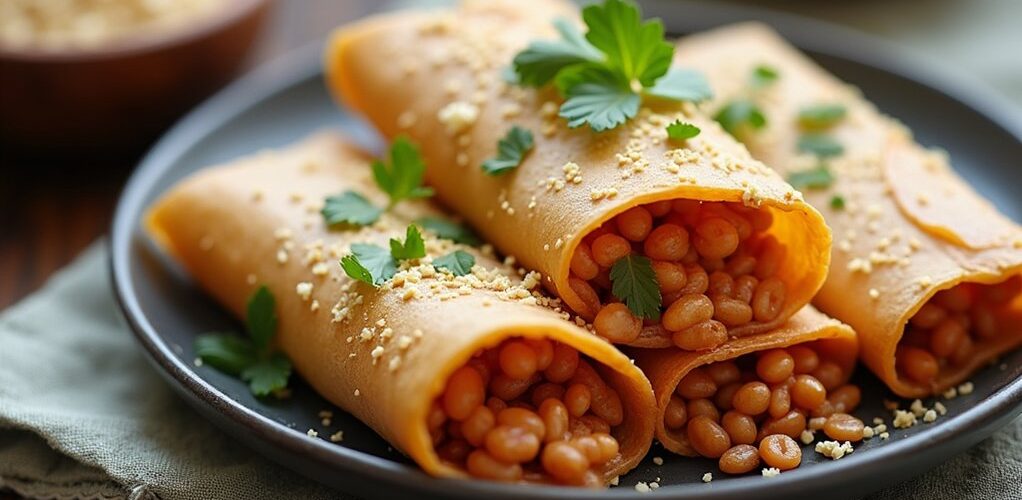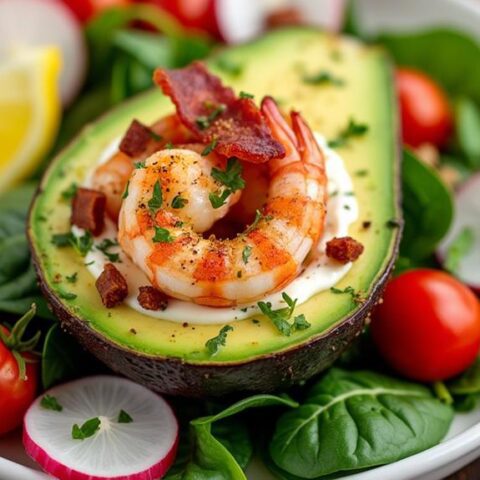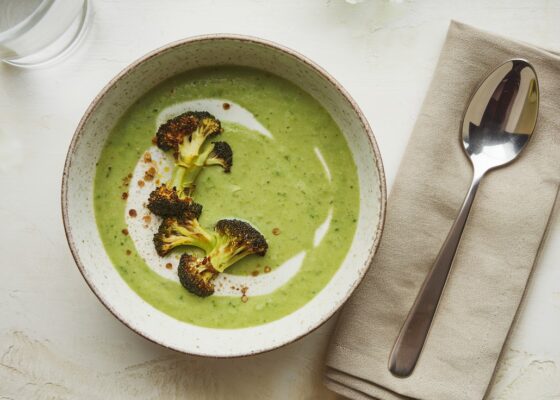
Traditional tamales are not low-carb, containing approximately 44 grams of total carbohydrates per 166-gram serving, with about 15.05 grams of net carbs per 100 grams. This Mexican dish, made from nixtamalized corn masa and various fillings, has a significant glycemic impact due to its high starch content. However, low-carb alternatives using almond flour and cream cheese can reduce the carb content to around 6 grams per tamale, making them more suitable for carb-conscious diets. Understanding tamale variations and portion control opens possibilities for enjoying this classic dish.
Key Takeaways
- Traditional tamales contain approximately 44 grams of carbohydrates per 166-gram serving, making them not low-carb friendly.
- With 15.05g of net carbs per 100g serving, traditional tamales are too high in carbohydrates for keto or low-carb diets.
- Low-carb alternatives using almond flour instead of corn masa reduce carbs to 6g total and 4g net per serving.
- The high glycemic load of traditional tamales causes significant blood sugar spikes, requiring careful portion control.
- Healthier low-carb Mexican alternatives include carne asada, lettuce-wrapped tacos, and pico de gallo.
Understanding Traditional Tamales
Tamales, a cherished staple of Latin American cuisine, represent one of the most traditional forms of corn-based foods in the Americas. Made from nixtamalized corn ground into masa, traditional tamales are not low in carbs, containing approximately 44 grams of carbohydrates per 166-gram serving.
Corn-based tamales, deeply rooted in Latin American tradition, pack substantial carbohydrates into their flavorful, masa-wrapped packages.
These iconic dishes are crafted by wrapping the masa and fillings in either banana leaves or corn husks before being steamed to perfection.
While the base recipe remains consistent, tamales can feature various fillings such as cheese, meat, fruits, or vegetables, which affect their overall nutritional profile.
Despite their carb content, tamales offer nutritional benefits, including significant fiber content that aids digestion and blood sugar management, providing at least 12% of the daily recommended fiber intake.
Carbohydrate Content Analysis
Traditional tamales contain substantial carbohydrates, with approximately 15.05g of net carbs per 100g serving and 44g of total carbs in a standard 166g portion.
The carbohydrate makeup consists primarily of starch (31.1g) and sugar (1.4g), with fiber contributing 3.6g per serving.
In contrast, keto-friendly tamales offer a dramatically reduced carbohydrate profile of only 6g total carbs and 4g net carbs per serving, making them more suitable for low-carb dietary requirements.
Traditional vs. Keto Tamales
When examining the carbohydrate content of these beloved Mexican dishes, the differences between traditional and keto-friendly versions become strikingly apparent.
Traditional tamales pack a substantial carbohydrate punch, containing approximately 15.05g of net carbs per 100g serving, with a typical corn tamal reaching up to 44g of carbs. These numbers make them unsuitable for those following a low carb lifestyle.
Keto tamales, however, offer a significant reduction in carbohydrates by substituting corn-based masa with almond flour, resulting in only 6g of total carbohydrates per serving.
Additionally, they provide higher protein and fat content, with up to 33g of protein and 40g of fat, compared to traditional tamales' 6g of protein and 12g of fat, making them a more suitable option for ketogenic dieters.
Net Carb Breakdown Analysis
A detailed analysis of net carbohydrates in tamales reveals significant variations across different varieties, with most traditional recipes containing substantial amounts that exceed low-carb dietary guidelines.
Traditional corn tamales contain approximately 15.05g of net carbs per 100g serving, with a standard tamale weighing 166g and delivering around 44g of carbohydrates.
While cheese-filled varieties offer higher fat and protein content, at 21.5g of fat per serving, they remain high in carbohydrates.
Even protein-rich filled tamales maintain substantial carb levels that can quickly surpass daily allowances for those following low-carb eating plans.
This carbohydrate composition makes tamales particularly challenging for individuals adhering to ketogenic or carb-restricted diets, as a single serving can represent most or all of their daily carb limit.
Net Carbs Vs Total Carbs in Tamales
Understanding the distinction between net carbs and total carbs becomes particularly relevant when examining tamales' nutritional profile. A typical corn tamal contains approximately 44g of total carbs, with net carbs accounting for a significant portion of this amount.
The breakdown reveals a complex carbohydrate structure dominated by starch content.
- Total carbs in a 100g serving: 15.05g
- Starch content per serving: 31.1g
- Sugar content: 1.4g
- Net carbs after fiber subtraction remain high
- Daily keto limit comparison: One tamal can exceed 20-30g restriction
When evaluating tamales for dietary purposes, the high net carb content makes them challenging to incorporate into low-carb eating plans, particularly ketogenic diets, where carbohydrate restrictions are strictly enforced.
Impact on Blood Sugar Levels
Tamales have a significant glycemic load due to their high carbohydrate content, particularly from the masa dough, which can trigger notable increases in blood sugar levels. Research on insulin response indicates that consuming tamales leads to a substantial release of insulin as the body works to process the 34.4g of net carbs typically found in a single serving. The fiber content provides some moderation of blood sugar spikes, but the overall carbohydrate load remains considerable enough to impact glucose control, especially in individuals with diabetes or insulin sensitivity. Additionally, adherence to a ketogenic diet can lead to improved glycemic control and less reliance on diabetes medications, which is why those managing diabetes might seek lower-carb alternatives to foods like tamales.
Glycemic Load Analysis
When examining the glycemic impact of tamales, their substantial carbohydrate content of 15.05g per 100g serving plays a significant role in blood sugar management.
The high glycemic load of these traditional dishes necessitates careful evaluation, particularly for individuals monitoring their glucose levels.
- Traditional tamales contain significant carbs and high starch content from corn masa
- The glycemic load varies depending on filling ingredients and preparation methods
- Fiber content provides some moderation of blood sugar response
- Portion control is essential for managing glycemic impact
- Explore alternatives or modifications for lower carb requirements
While tamales can be enjoyed as part of a balanced diet, their carbohydrate profile requires mindful consumption.
The glycemic response may be particularly notable when tamales are consumed alone, making it important to explore complementary foods that can help moderate blood sugar impact.
Insulin Response Research
Research into insulin response reveals significant metabolic impacts from tamale consumption, particularly due to their concentrated carbohydrate content.
Studies show that traditional tamales, even when prepared with medium heat and wrapped in corn husks, can trigger substantial insulin responses, with a single serving containing up to 44g of carbohydrates.
While ingredients like garlic cloves may add flavor and nutritional benefits, they do little to offset the blood sugar impact of tamales' high carbohydrate content.
Research indicates that regular consumption could contribute to increased insulin resistance over time, especially concerning for those monitoring glucose levels.
The net carb content, often exceeding 15g per 100g serving, poses challenges for individuals following ketogenic or low-carb diets, where daily carbohydrate intake should typically remain between 20-30g to maintain ketosis.
Common Tamale Ingredients
Traditional Mexican cuisine showcases masa as the foundational ingredient in tamale preparation, with this corn-based dough forming the distinctive outer layer of these beloved dishes. The essential components include nixtamalized corn masa, carefully selected fillings, and traditional wrappings like corn husks or banana leaves.
Masa, the heart of Mexican tamales, transforms nixtamalized corn into delicate dough, embracing savory fillings within traditional corn husk wrappings.
- Masa dough, made from processed corn and often mixed with lard or vegetable shortening
- Protein-rich filling options including seasoned pork, chicken, or beef
- Fresh vegetables and cheese variations for vegetarian alternatives
- Corn husks or banana leaves for traditional steaming methods
- Additional fats and seasonings that enhance flavor and texture
These ingredients combine through specific cooking methods to create tamales' characteristic texture and taste, though the masa types and filling options can greatly impact their nutritional content, particularly their carbohydrate levels.
Keto-Friendly Alternatives
For those seeking to maintain a ketogenic lifestyle, innovative low-carb alternatives to traditional tamales have emerged, revolutionizing this beloved Mexican dish.
Key keto ingredient substitutions include almond flour and cream cheese in place of traditional masa, dramatically reducing carbohydrate content to approximately 6g per tamale. These modifications allow for successful tamale cooking methods while maintaining authentic flavors.
The modern keto tamale emphasizes high-protein fillings like shredded pork, delivering about 33g of protein while incorporating healthy fats.
Low carb toppings such as cheese and avocado not only enhance the taste but also contribute to meeting ketogenic dietary requirements.
A popular sweetener such as stevia could be used in keto-friendly tamale recipes to add a touch of sweetness without disrupting ketosis.
These adaptations enable individuals to enjoy tamales while staying within their daily carb limits, making it possible to maintain ketosis without sacrificing this cultural favorite.
Making Low-Carb Tamales at Home
Creating delicious low-carb tamales at home requires strategic ingredient substitutions and careful preparation techniques to maintain authentic flavors while reducing carbohydrate content.
The process involves replacing traditional masa with an almond flour-based dough mixture, incorporating cream cheese and melted cheese for texture and binding.
When working on tamale assembly, proper preparation of corn husks and low carb fillings is essential for success.
- Soak dried corn husks in warm water until pliable
- Mix almond flour, cream cheese, and melted cheese to create keto-friendly dough
- Prepare fillings by cooking meat with spices and blending with chili sauce
- Spread dough evenly on softened husks before adding fillings
- Apply proper steaming techniques for approximately one hour until fully cooked
Using avocado oil for cooking meat can enhance the nutritional value of the fillings while providing a suitable high smoke point for the task.
Nutritional Comparison With Other Mexican Foods
When comparing tamales to other Mexican dishes, their carbohydrate content stands particularly higher, with 15.05g of net carbs per 100g serving. Despite their cultural significance, tamales may not align with low-carb dietary goals, especially when compared to regional variations of Mexican cuisine that employ different cooking techniques. The ketogenic diet involves low carbohydrate intake, prompting the body to enter a state of ketosis, where fat is used for energy instead of sugar.
| Dish | Net Carbs (per 100g) |
|---|---|
| Tamales | 15.05g |
| Fried Eggs | 0.9g |
| Pico de Gallo | 3.9g |
| Pho Broth | 2.3g |
While traditional tamales remain a beloved staple in Mexican cuisine, those following low-carb diets can explore alternatives that maintain authentic flavors. Carne asada, grilled vegetables, and lettuce-wrapped tacos offer similar satisfaction with considerably fewer carbohydrates, making them more suitable for ketogenic and low-carb eating patterns.
Tips for Enjoying Tamales on a Low-Carb Diet
Though traditional tamales pose challenges for low-carb dieters, several practical strategies can help enthusiasts enjoy this beloved Mexican dish while maintaining their dietary goals.
Various tamale variations and thoughtful meal pairing can greatly reduce carbohydrate intake while preserving the essence of this classic dish.
- Replace traditional masa with almond flour and cheese-based dough to create keto-friendly tamales
- Select protein-rich fillings like shredded chicken, pork, or beef, avoiding starchy ingredients
- Control portion sizes to stay within daily carb limits, typically one or two tamales per serving
- Add low carb toppings such as sour cream, fresh cilantro, or hot sauce for extra flavor
- Serve with keto-friendly sides like cauliflower rice, fresh avocado slices, or Mexican-style coleslaw
For those seeking pasta alternatives, Shirataki Noodles are a great low-carb option, with less than 1g carbs per serving, making them perfect for keto-friendly meals.
Health Benefits and Drawbacks
Despite their high carbohydrate content, tamales offer a complex nutritional profile with both notable benefits and potential drawbacks for health-conscious individuals.
Their fiber benefits include providing approximately 12% of daily recommended intake, which supports digestive health and helps maintain steady blood sugar levels. As excellent micronutrient sources, tamales deliver essential nutrients like calcium, iron, and vitamin B3, contributing to overall wellness and energy metabolism.
However, cholesterol considerations arise from their traditional preparation with lard, which can impact heart health through increased saturated fat intake.
While tamales can be part of a balanced diet, their substantial carbohydrate content of 15.05g per 100g serving requires careful portion control, particularly for those monitoring their carbohydrate intake or following specific dietary protocols. Moreover, enhanced insulin sensitivity through dietary changes like the ketogenic diet highlights the importance of managing carbohydrate intake for those with cardiovascular concerns.
Best Practices for Portion Control
Managing tamale portions effectively requires strategic planning and awareness of serving sizes to maintain a balanced carbohydrate intake. With approximately 15.05g of net carbs per 100g serving, implementing portion control strategies becomes crucial for those monitoring their carb consumption. Serving size recommendations suggest limiting intake to one or two tamales, particularly when following a ketogenic diet's strict 20-30g daily carb limit. Select smaller-sized tamales or cut larger ones in half for better calorie counting. Pair tamales with low-carb side dishes to balance overall meal composition. Choose protein-rich fillings like meat or cheese to increase satiety. Monitor portion sizes carefully when using high-fat dipping sauces. Ensure that snacks align with daily carbohydrate limits to stay on track while promoting satiety and satisfaction through variety in whole foods. Track daily carbohydrate intake to make sure tamales fit within dietary goals.
Frequently Asked Questions
Are Tamales Low in Carbs?
Traditional tamale ingredients contribute significant carbohydrates, with approximately 15g per 100g serving. While carb alternatives exist, standard tamales remain high-carb when making nutritional comparisons to keto-friendly options.
Can I Eat Tamales While Trying to Lose Weight?
Tamales can be included in weight loss efforts through strict portion control. However, seeking lower-calorie tamale alternatives and following general weight loss tips like calorie monitoring is recommended for better results.
Are Tamales Good for Carb Loading?
Tamales provide excellent carb loading benefits for athletes due to their corn-based ingredients and substantial carbohydrate content. Their combination of complex carbs and protein supports athletic nutrition requirements effectively.
How Unhealthy Is a Tamale?
A tamale's healthiness depends on portion size and preparation method. Its caloric content varies but typically includes high saturated fat, sodium, and carbohydrates, though it does provide some nutritional value through protein and minerals.
Conclusion
Traditional tamales, while delicious and culturally significant, are not considered low-carb due to their corn-based masa dough and starchy ingredients. However, those following a low-carb diet can still enjoy tamales occasionally through portion control, choosing protein-rich fillings, or exploring alternative recipes using low-carb ingredients. Understanding the carbohydrate content helps make informed decisions about incorporating tamales into a balanced, carb-conscious eating plan.










No Comments